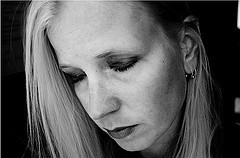The Faces of Emptiness: The Paths to Healing
The Fuel of life is feeling. If we are not filled up in childhood, we must fill ourselves as adults. Otherwise we will find ourselves running on empty.
From Running on Empty: Overcome Your Childhood Emotional Neglect
In my last blog post, The Different Faces of Emptiness: Part 1, I outlined three different types of childhood experience which can cause three different types/levels of Empty feelings in adults. Before reading this post on healing, I suggest that you take a moment to re-read Part 1.
Welcome back! Now that you’ve refreshed on what causes emptiness, let’s talk about how to heal.
Healing from Empty is not simple, but definitely possible. The healing process takes place in the three different areas, outlined in the Table below. If you have Empty Type 1 or 2, your primary focus will be on the first two columns, with a sprinkling of the third. If you have Type 3, you will want to work on all three areas. The third area, Inner Life, will likely be the hardest for you, but also the most valuable.
Thoughts/Behavior
Relationships
Your Inner Life
Recognize what you didn’t get in childhood
Increase emotional connections
Grieve what you didn’t get
Emotional awareness & management
Boundaries (distance?) with parents as needed
Develop compassion for yourself
Self-care
Work on trusting others
Decrease self-directed anger
Decrease self-blame
Therapy relationship
Self-acceptance & self-love
Increase self-knowledge
Share your pain with another
Value your emotions
If you have depression or anxiety, let medication help
Let down your walls
Reclaim the parts of yourself that your parents rejected or ignored
If you find this Table overwhelming, please don’t be alarmed. All of these items can be done. I know this because I have been through them with many people in therapy, and have witnessed amazing progress.
However, please take note of two things: It takes commitment, conscious effort, and time; and it often helps tremendously to work with a skilled therapist who you feel very comfortable with.
Here are the Steps to Healing from Empty:
Step 1: Recognition and Grieving: The first and most vital step for everyone who feels Empty is to recognize that your empty space represents something that you didn’t get in childhood. Identify what is missing (emotional validation, connection and perhaps rejected parts of yourself), and grieve it all. This may involve feeling sad and/or angry. It’s okay. You have to feel it to move forward.
Step 2: Start to Fill the Holes: Befriend your emotions; start noticing when you have them; learn to name them and to manage them. Listen to what they are telling you.
Step 3: Work on Self-Care: Put yourself first, learn to say no. Pay attention to your own needs and recognize that your needs matter. Stop blaming yourself.
———————————————————–
Steps 1, 2 and 3 can all be worked on by making conscious effort, paying attention, and self-monitoring on Tracking Sheets. The book Running on Empty: Overcome Your Childhood Emotional Neglect is designed to work on all of these pieces. In addition, it will be helpful to work with a therapist.
If you have Empty Type 3, please pay special attention to Steps 4 and 5 below. Here, working with a therapist becomes more vital.
———————————————————–
Step 4: Let Down Your Walls: Share with a trusted person that you are working on getting closer to people, and to accept and feel more connection and love. Try to express your feelings more and to be more assertive (not passive or aggressive). If you have Type 3 Empty, Dialectical Behavior Therapy (DBT) is most helpful with this. It is designed to help you manage your feelings and impulses.
You may make more progress here by getting some emotional or physical distance from your neglectful or abusive parents. The distance can be temporary, while you work on this.
Step 5: Learn to Love Yourself: Yes, it is easier said than done. This process involves seeing yourself as the child you were, growing up as you did. What parts of you did your parents ignore or reject? Know that they did so because of who they were, not because of who you were.
Have compassion for that little child, and for yourself as an adult. Your struggle is real, and you deserve more and better. You must reclaim, and learn to love, all of the different parts of who you are: your emotions, your needs, your inner you.
Above all, as you do this work, please carry these words with you:
Your Empty is an important part of you. It represents the old and the past, but also the future and the new.
It is not an absence but a space, filled not with pain, but with possibility. It is room for your new story, the one you will write yourself. It is room for your life, your feelings, and the people who you choose.
Fill it with self-knowledge, self-care, self-compassion, self-love, and your people.
Then you will no longer find yourself running on empty.
To read more about emptiness and Childhood Emotional Neglect, visit EmotionalNeglect.com.
If you have Type 3 Empty, here are two resources that you may find helpful:
Image Courtesy: Nina`H (www.flickr.com/photos/ninahiironniemi/1118863010/), Licensed under the Creative Commons Attribution-NonCommercial 2.0 Generic | Flickr




